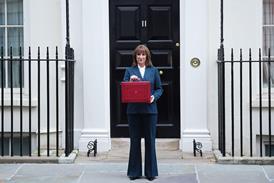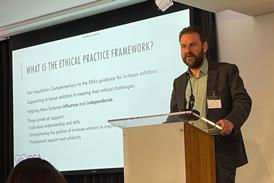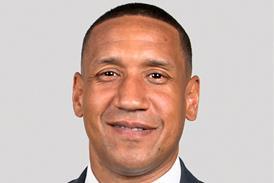Re BM (Children: Tracking Devices) has exposed a troubling intersection between technology and parenting: the use of tracking devices to monitor children.

His Honour Judge Malcolm Sharpe, sitting in the Liverpool Family Court, found last month that a mother and father who had sewn three GPS trackers into toys and a bag given to their children, who had been placed in foster care, did so as part of ‘a wider plan to know where the children were either in terms of where they were living, or from where they could be snatched – and probably both’.
The judgment highlights the complications surrounding covert recordings and shows how consumer technology can undermine both court orders and the trust central to family proceedings. Judge Sharpe found that the parents’ deception had caused a ‘disastrous diversion’ from the otherwise good progress they were making towards reunification and urged them to ‘take stock’ of the damage they had caused to their own case.
Tracking devices are cheap, discreet and widely available. Marketed as tools of reassurance for parents, they can be stitched into toys, slipped into bags or hidden in footwear. Yet in the wrong hands, they easily become instruments of control or even abduction planning.
For practitioners, the case raises urgent questions. How should we advise clients who feel driven to use technology to ‘stay close’ to their children? And how can courts respond to this growing form of digital interference? Re BM is not an isolated incident. The misuse of surveillance tools is appearing more frequently in family disputes.
Many couples share devices, passwords and cloud accounts. Post-separation, this can enable covert monitoring: accessing an ex-partner’s email, tracking through shared apps or vehicle GPS, or secretly recording conversations. While sometimes motivated by fear or concern, such actions often amount to coercive or controlling behaviour – a form of abuse recognised in law.
Seen in that light, Re BM is not just about parental desperation but part of a wider trend of digital intrusion that courts are still grappling to keep up with.
A secretly recorded exchange or location log might appear helpful, but if gathered through deception, it may be ruled inadmissible – and even backfire against the party who obtained it.
Judges must increasingly balance evidential value against how information was obtained. Recordings may prove something in a way that other forms of evidence could not, and it is easy to see why so many people seek to rely on them.
However, this area is fraught with difficulty and there are pitfalls to be avoided. Anyone considering this should proceed with caution, particularly where children are involved, as the court must also consider the detrimental impact on a child of being recorded without their knowledge.
Where a recording is relevant, has not been tampered with and shows a full account of what took place in context, it can be of evidential value. However, recordings are easy to manipulate. Moments can be ‘cherry-picked’ to best support an argument.
Recordings involving children often involve one parent asking leading questions of the child, which renders the evidence flawed and may lead to allegations of coaching the child. If a parent has serious concerns, they should ensure that this is reported to a social worker or the police.
The rapid development and increasing use of AI further complicates matters, as fraudulent recordings are relatively easy to produce. This can be used as a form of gaslighting and controlling behaviour, with one party threatening to expose behaviour that has never taken place to a court.
Practitioners have a duty to ensure clients understand these risks. Advising against such conduct should form part of every early conversation about digital behaviour. Shared accounts, smart devices and tracking tools are as relevant as financial disclosure.
The Family Justice Council published guidance in May on covert recordings in family law proceedings concerning children, which is a useful resource for practitioners.
The case also highlights how easily consumers can buy and operate powerful tracking devices. The gadgets used by the parents were compatible with a standard smartphone. As the market for such products grows, so do the policy questions.
Should there be tighter controls on who can purchase trackers and for what purpose? Should manufacturers be required to include consent-based safeguards or clearer warnings about misuse?
While criminal law offers recourse through stalking and harassment offences, regulation of consumer tracking technology remains limited. A joined-up approach spanning family law, technology regulation and child protection is increasingly necessary.
Practitioners should now assume that digital surveillance could feature in any high-conflict case. Practical steps include:
- Raising awareness early – explaining the legal and evidential consequences of covert monitoring.
- Encouraging secure communication – such as using a new email address solely for legal correspondence.
- Seeking undertakings or injunctions – to prevent one party from engaging in tracking or recording.
- Consulting digital experts – when devices are suspected to be compromised.
These measures are not only protective but educative, helping clients understand that attempts at surveillance may themselves constitute harm.
Judge Sharpe described the outcome in Re BM as a tragedy. The parents’ assessments had been positive and reunification with their children was possible. Their decision to install trackers – perhaps driven by anxiety or mistrust – destroyed that chance.
However understandable the emotions involved, surveillance of children or former partners will almost always be seen as a breach of trust – and often as emotional harm in itself.
As tracking technology becomes ever more sophisticated, courts and practitioners must evolve. Re BM draws an essential boundary: love cannot justify surveillance.
Georgina McCluskey is a solicitor at Ribet Myles Family Law, London































No comments yet